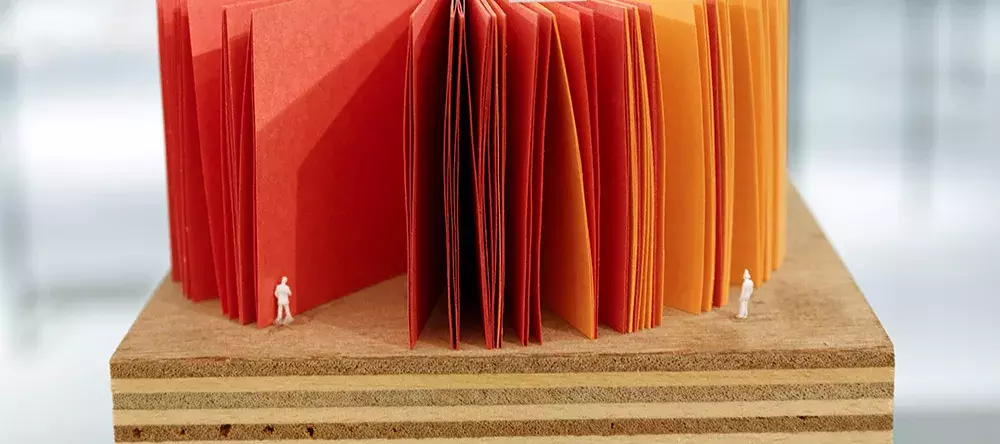
This summer, a unique theme park called “Small Worlds Tokyo” finally opened its doors in Japan’s capital. It features skyscrapers, airports, sci-fi cities and more – all crammed into the space of a normal office block. How? They’re all miniaturized, rendered in tiny, loving detail and exhibited as table-top displays. Though it’s the first all-miniature attraction in Japan, it’s a reflection of the country’s vibrant miniature culture, which has gone on to influence the world of “small” in a big way.
Why are we attracted to small things? As children, we’re given miniatures as playthings, from toy cars to teddy bears to doll houses, so we feel a familiarity with their small scale. Later, smallness triggers nostalgia for these toys of our youth, but also the subconscious evolutionary pressure to nurture all things that are tiny and “childlike” – be they human children, puppies and kittens, or even something as abstract as “Baby Yoda”. This phenomenon can be observed across cultures, and in Japan, helps inform the concept of “kawaii.” Typically translated as “cuteness”, “kawaii” more generally implies something that is delicate, powerless, or requires our care, whether that’s a chubby-cheeked cartoon mascot or an entire Starbucks cafe scaled down to fit in the palm of one’s hand.
But the power of “kawaii” is only one part of the story of how miniatures became big in Japan. We can trace the evolution of “small” connoisseurship back to the 7th century, when Japanese emissaries visited China and brought back tiny, carefully-pruned trees in containers; these later became the treasured heritage art form of bonsai. For the centuries to come, cultivating bonsai, as individual trees or more often as part of entire miniaturized landscapes, was a popular pastime of aristocrats. The Edo period (1603-1868) saw the rise of other craft traditions that prized intricate workmanship and exquisite detail, from kimono accessories to lacquerware. Skilled metalworkers produced elaborate designs for the swords and armor of the elite class of samurai warriors – but with the transition of power back to the Emperor during the Meiji Restoration (1868), samurai were officially forbidden from carrying swords, putting these craftsmen out of business. To survive, they turned to making toys, boxes, vases and other items, many for foreign export to meet the new demand from Europe for Japanese goods. The Meiji-era opening of trade with the West created an appetite for Japanese products abroad (typically small-sized for ease of export, such as wildly popular netsuke carvings), and also inspired local craftsmen with new and innovative imports – including miniatures like dollhouses and model train sets.
This history, along with a high number of skilled craftsmen and favorable export conditions, combined to make Japan a hub of toy production by the early 1930s. During World War II most manufacturing of anything but wartime essentials ceased, but as the country rebuilt during the Occupation, ambitious entrepreneurs returned to the trade, and further established the country as a place where painstakingly complex miniatures could be made cost-effectively, and exported to delight children (and adults) around the world. Today, Japan is considered the mecca of miniatures, and the hobbyist community around action figures, dollhouses, dioramas, miniature food, and all manner of model vehicles (trains, planes, ships and automobiles) is well acquainted with the central role of Japanese designers and manufacturers, even if they’ve never set foot in the country.
In the digital age, global fans have also been able to access and embrace specifically Japanese miniature trends via blogs, YouTube, and Instagram, such as the rise of miniature food cooking videos, dioramas of showa-era shopfronts, and even more “experimental” microscopic works by Japanese artists. The esteemed architect Sou Fujimoto, known for his conceptual projects around the world, began exploring miniatures in his “Architecture is Everywhere” series (introduced as part of the “Futures of the Future” exhibition at JAPAN HOUSE Los Angeles in 2018), in which he repurposes and photographs everyday objects like a dishwashing sponge, or a pile of potato chips, as speculative “architecture” by placing tiny human figures next to them for scale. On the more humorous side, the Instagram account “Mozu World” creates a variety of witty micro-tableaus, including a miniature apartment that opens out of the wall next to an electrical outlet – perfectly fit for a mouse. Another Instagram creative named Tanaka Tatsuya has over 2 million followers and is known for witty dioramas where a dish of matcha ice cream becomes rolling hills for tiny hikers.
With their long history, it’s clear that miniatures aren’t going anywhere soon. In fact, they may be even more appealing today – given the uncertainties of the world around us, isn’t it tempting to create a tiny version of that world where everything is perfect? Whether they’re a fun hobby or something more emotional, it’s clear that small, beautiful objects exert an ever-lasting pull.
In the words of Sei Shonagon, written almost a thousand years ago,
No matter what they are,
All things small are adorable."
#TinyArchitect - Architecture is Everywhere Contest
Duration | 09.24.2020 - 11.05.2020
Social Media | Facebook, Instagram, and Twitter.
Presented by | JAPAN HOUSE Los Angeles, Sou Fujimoto Architects
Supported by | TOTO GALLERY·MA

